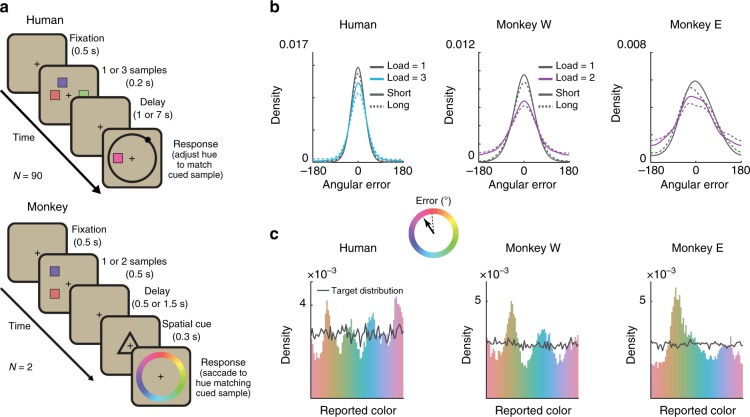Fig. 1.
Memories cluster in a continuous working memory task. a Top: humans (N = 90) performed a color delayed-estimation task in which they reported the color of a spatially-cued sample after a variable delay. Humans made their report by adjusting the hue of the response probe by rotating a response wheel (black circle) using a mouse. We rotated the mapping between wheel angle and color on each trial to avoid spatial encoding of color memories. Bottom: monkeys (N = 2) performed a similar task. A symbolic cue indicated which sample to report (top or bottom). Monkeys reported a specific color value using an eye movement to a color wheel that was rotated on each trial. b Distribution of angular error for humans (top) and monkeys (bottom). Error increased with load and delay time. Gray lines = low load, blue lines = high load, solid lines = short delay, dashed lines = long delay. Inset: Error is calculated as the angular deviation between the color of the cued sample and the reported color in color space. c Non-uniform distribution of reported colors for humans (top) and monkeys (bottom). Gray line shows the distribution of target colors. Source data are provided as a Source Data file

